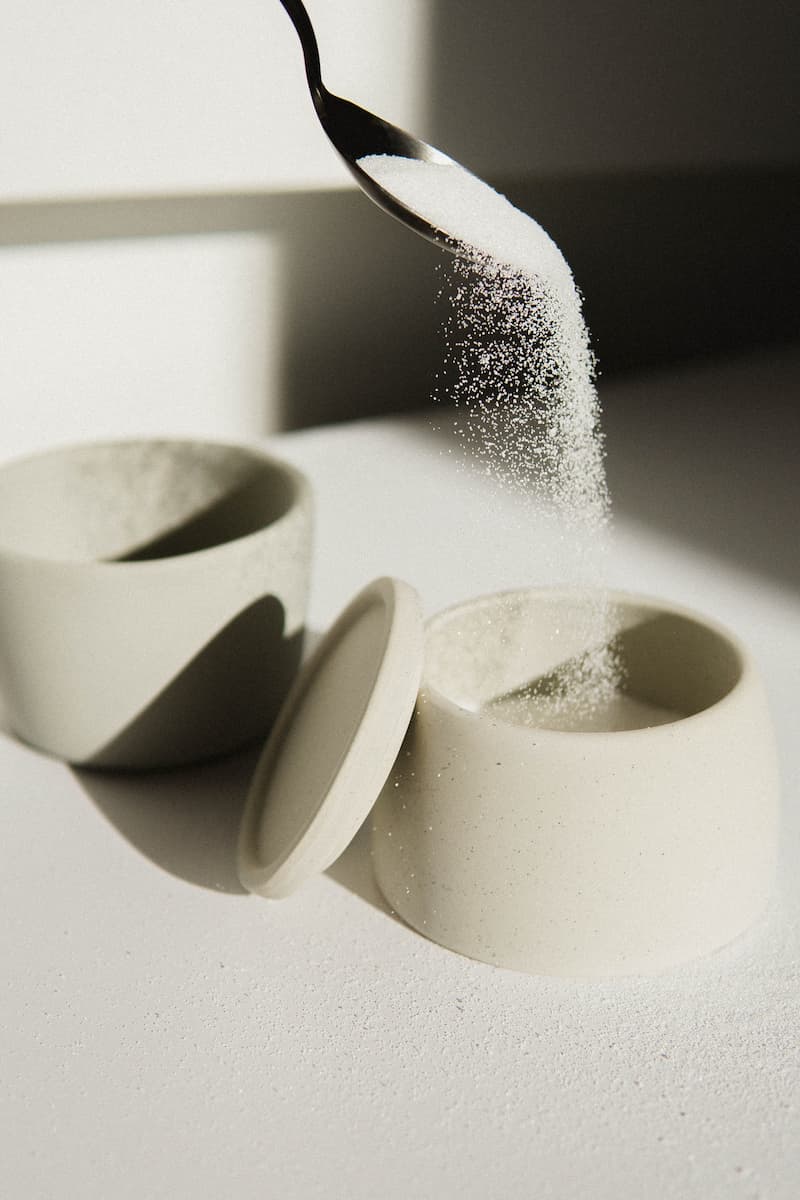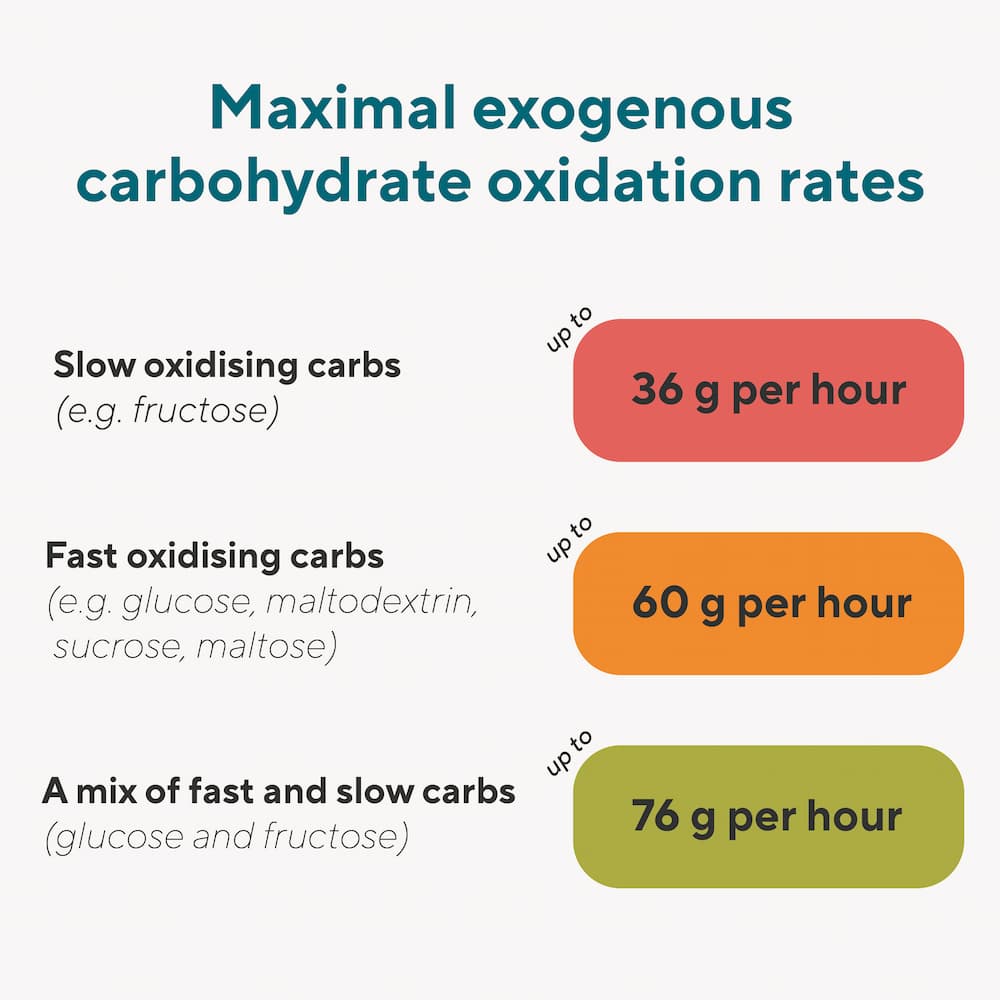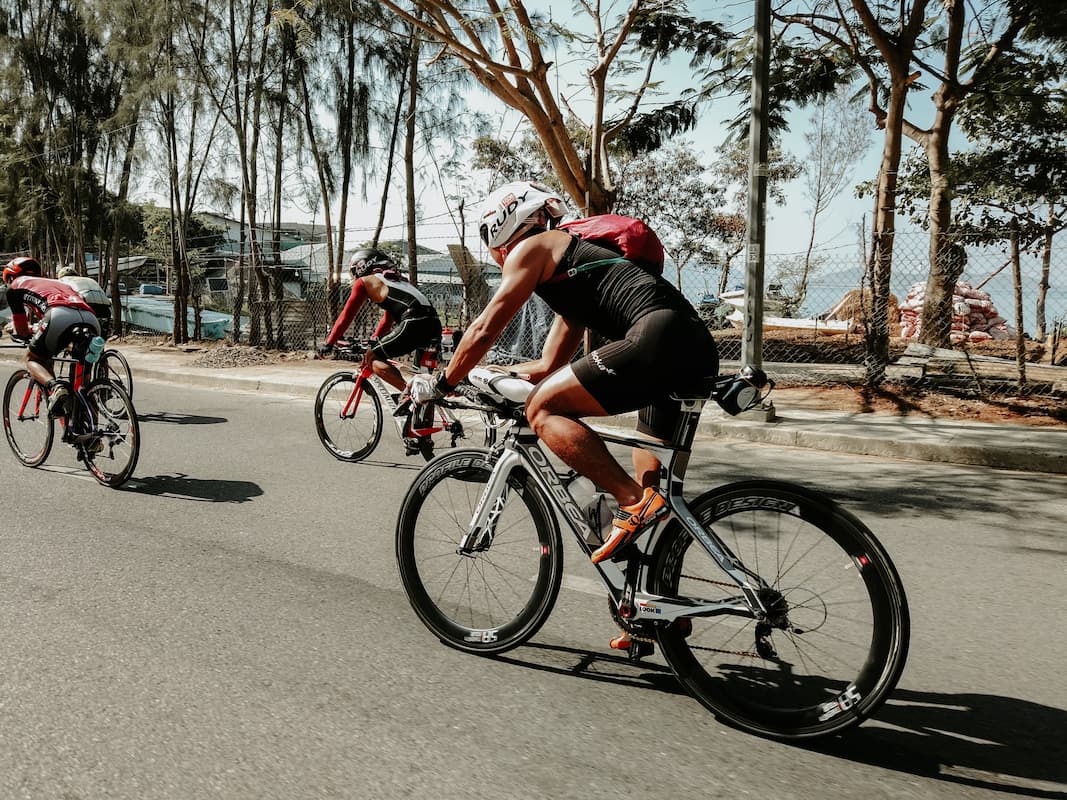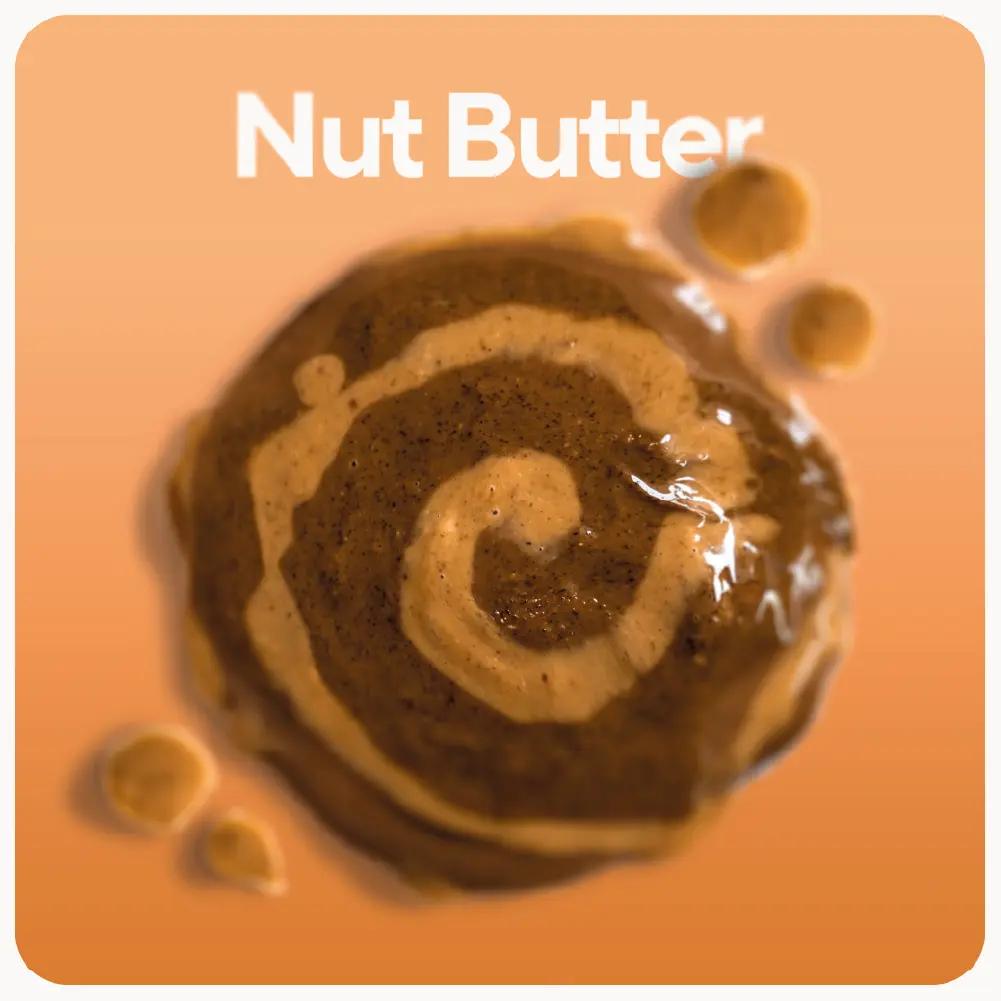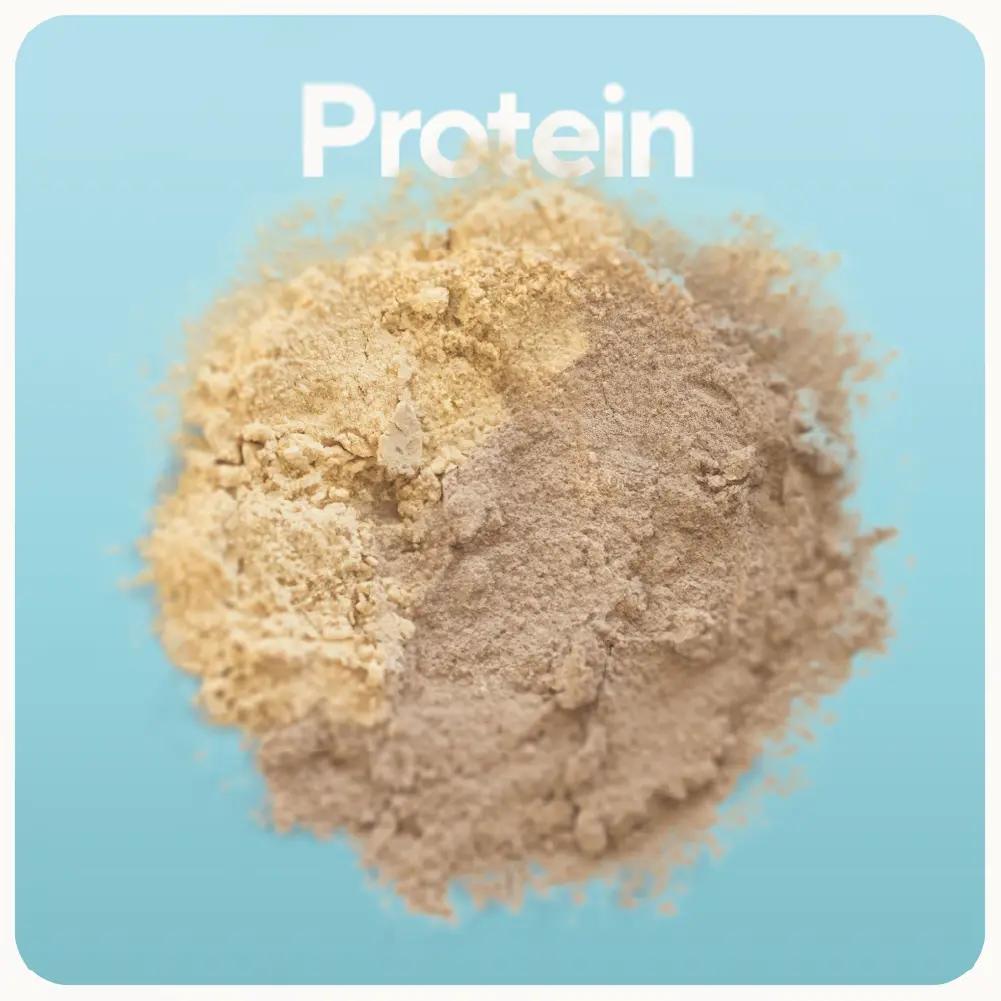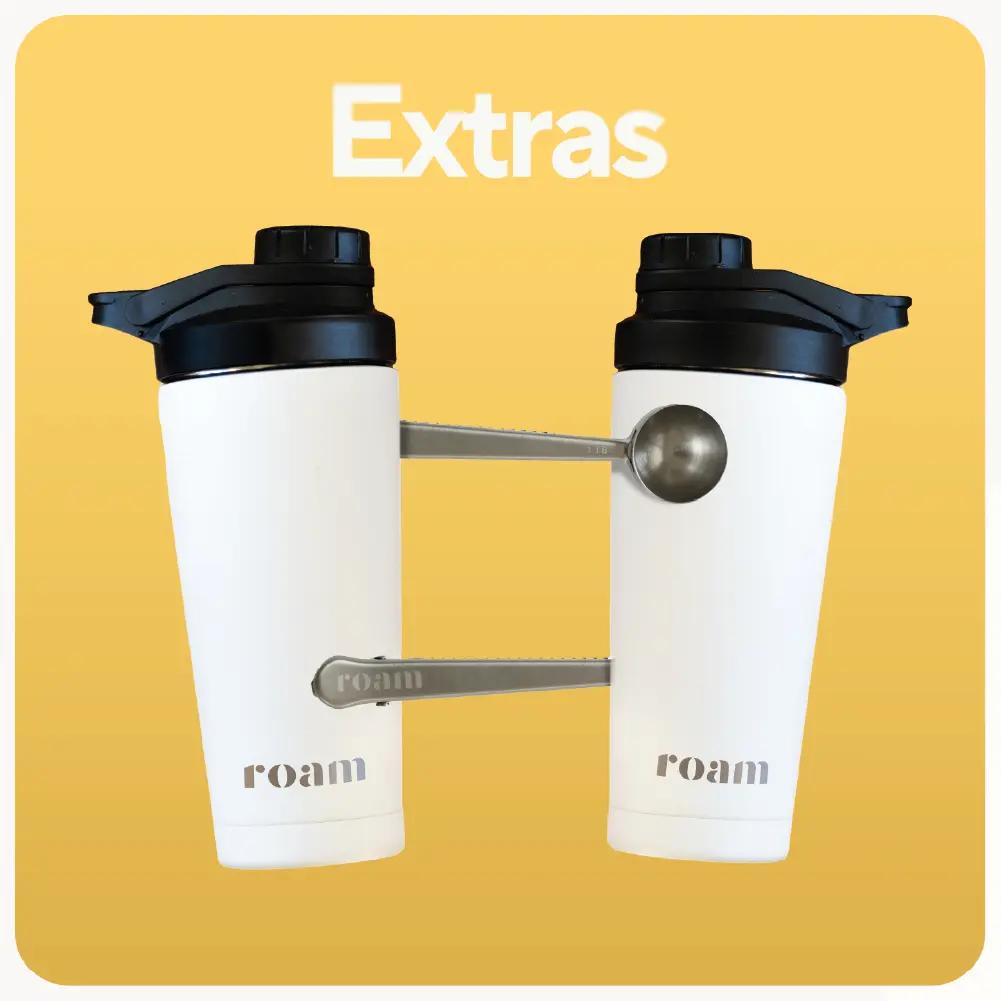Single Carbohydrates and their Limitations
Single carbohydrates refer to the use of one type of carbohydrate, such as glucose, sucrose, or fructose as the sole source of energy during exercise. These carbohydrates are absorbed through a specific transporter in the intestines, limiting the rate at which they can be oxidised and used for energy.
Rapidly oxidised carbohydrates like glucose, maltodextrin, and sucrose are oxidised at a rate up to 1 g/min, but no higher. This limitation is related to how these carbohydrates are absorbed in the intestines through a transporter called SGLTI. Once this transporter becomes saturated, the delivery of glucose to the muscles cannot be further increased.
Other carbohydrates, such as fructose, are oxidised at even lower rates due to slower digestion and absorption [1]. This leads to a bottleneck in delivering energy to the muscles, especially during prolonged exercise.
It was commonly believed therefore, that the maximum carbohydrates an individual could oxidise or burn was about 60 grams per hour, using one of the carbohydrate sources mentioned above.
Breaking this barrier 60 grams per hour limit has been a key focus in sports nutrition research in previous years.

